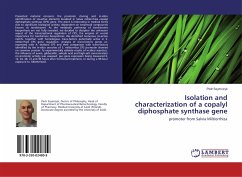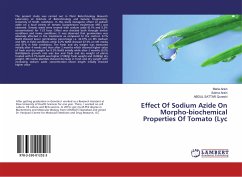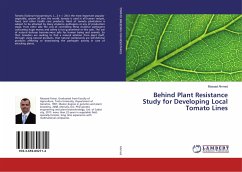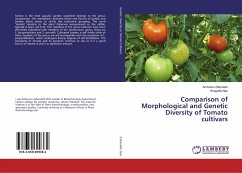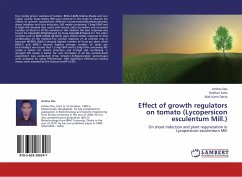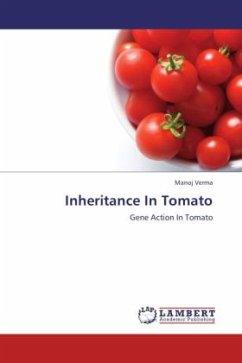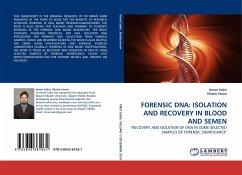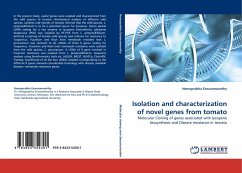
Isolation and characterization of novel genes from tomato
Molecular Cloning of genes associated with lycopene biosynthesis and Disease resistance in tomato
Versandkostenfrei!
Versandfertig in 6-10 Tagen
45,99 €
inkl. MwSt.

PAYBACK Punkte
23 °P sammeln!
In the present study, useful genes were isolated and characterized from the wild species of tomato. Biochemical analysis of different wild species, varieties and hybrids of tomato inferred that the wild species, L. pimpinellifolium is to be a potential source for lycopene. Hence partial cDNA coding for a key enzyme in lycopene biosynthesis, phytoene desaturase (PDS) was isolated by RT-PCR from L. pimpinellifolium. Artificial screening of tomato wild species and cultivars for resistance to Tospovirus, Fusarium and Root knot nematode revealed that L. peruvianum was resistant to all. cDNAs of thr...
In the present study, useful genes were isolated and characterized from the wild species of tomato. Biochemical analysis of different wild species, varieties and hybrids of tomato inferred that the wild species, L. pimpinellifolium is to be a potential source for lycopene. Hence partial cDNA coding for a key enzyme in lycopene biosynthesis, phytoene desaturase (PDS) was isolated by RT-PCR from L. pimpinellifolium. Artificial screening of tomato wild species and cultivars for resistance to Tospovirus, Fusarium and Root knot nematode revealed that L. peruvianum was resistant to all. cDNAs of three R genes coding for Tospovirus, Fusarium and Root knot nematode resistance were isolated from the wild species, L. peruvianum. A cDNA of R gene involved in Fusarium resistance was isolated from L. pimpinellifolium. Sequence analysis using bioinformatics tools viz, LALIGN, BALST, BLASTp, ClustalW, Treetop, ScanProsite of all the four cDNAs isolated corresponding to the different R genes showed considerable homology with already available disease / nematode resistance genes.




